Today, we are going to introduce the local gourmet “Himeji Oden” in Himeji City, Hyogo Prefecture. Then what is Himeji Oden? It is oden that is eaten with ginger soy sauce, and whether it is slowly simmered Kanto or thin dashi oden, if eaten with ginger soy sauce, it is Himeji oden. The ingredients are no different from regular oden, such as daikon, eggs, and konjac. Until about 15 years ago, there was no name for Himeji Oden, but in recent years, the name has become popular in the “B-1 Grand Prix”, which competes for local gourmets. Let’s find out what is so unique about this kind of oden!
ORIGIN / HISTORICAL BACKGROUND
The time of origin of Himeji Oden is uncertain. People say it dates back about 80 years. One theory claims someone accidentally sprinkled ginger soy sauce on oden — a nabemono that had been overcooked during wartime and postwar food shortages. Other accounts say vendors already served it, or that people in the early Shōwa period ate oden with ginger soy sauce; the origin remains uncertain. Oden is a nabemono of ingredients such as boiled eggs, daikon, konnyaku, and processed fishcakes stewed in a light soy‑flavored dashi. While most places pair oden with kneaded Japanese mustard, people in Himeji City, Hyōgo Prefecture and nearby areas (around Kakogawa–Aioi) add ginger soy sauce and eat it with the entire oden.
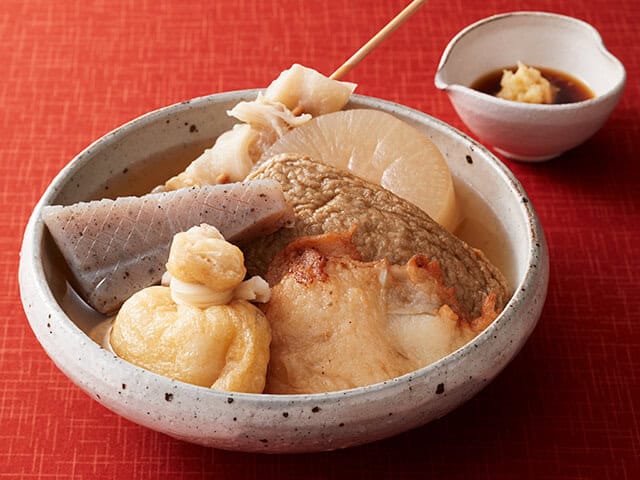
In addition, Tatsunoichi (next to Himeji City) and Himeji are soy sauce production areas, and Shirahama (Himeji City) was the production area for ginger until the early Showa era, so a unique way to eat using local ingredients was born. In this area, the method of eating ginger soy sauce on oden has been around for a long time, but it has only recently been called “Himeji Oden.” It didn’t get much attention because it was so common in Himeji and the surrounding areas. It is said that the “Himeji Oden Expedition” named it “Himeji Oden” in 2006. At present, it is attracting attention as a local gourmet in Himeji.
HOW IS HIMEJI ODEN MADE?
The Process
The ingredients are the same as normal oden such as Japanese radish, eggs, burdock heaven, and konjac. We also add Kamaboko, Himeji’s specialty, and octopus caught in Himeji. In the early Shōwa era around Himeji, people cut the strongly soy‑sauced Kanto‑style broth (kantodaki) and sprinkled ginger soy sauce on the oden. Later Kansai‑style light‑flavored oden appeared, and people began serving ginger soy sauce in small plates rather than pouring it over the oden. Ginger soy sauce is thick soy sauce mixed with grated ginger to taste.
Some restaurants add mirin and sake and boil the mixture to make their own ginger soy sauce. The oden itself follows the usual recipes: households and eateries mix both styles—Kansai’s light broth and Kanto’s strongly seasoned soy‑and‑mirin style—depending on preference. Anyway, if you eat it with ginger and soy sauce, you have Himeji Oden.
What is so unique about himeji oden?
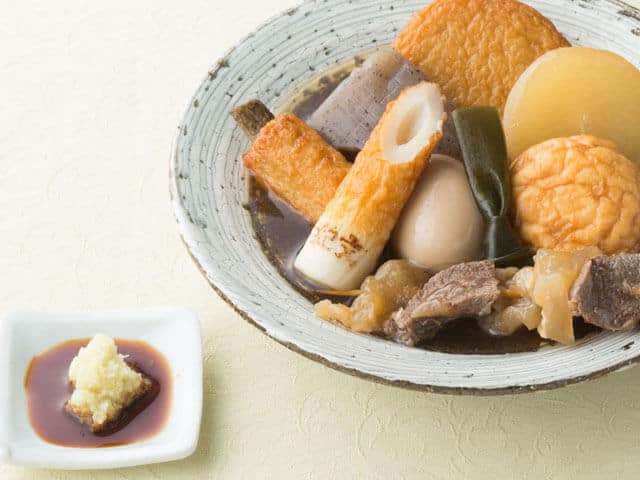
The most unique in Himeji Oden is the ginger soy sauce itself. The way the ginger soy sauce is being poured in the oden is one way of uniqueness that is only common practice in Hyogo prefecture with Himeji at the center and was said to have begun in the early Showa era (mid-1920’s). It also depends on the way restaurants served their Himeji Oden. Some have it with ginger soy sauce and some topped with brewery’s sake lees. While upon trying the Himeji Oden, you will find it not too strong, and on the contrary, oden not soaked in soy sauce is actually very lightly seasoned.
RECOMMENDED HIMEJI ODEN RESTAURANTS
If you want to be charmed by Himeji Oden and visit restaurants that clearly convey its charm, here are some recommended Himeji Oden restaurants.
Noko Restaurant
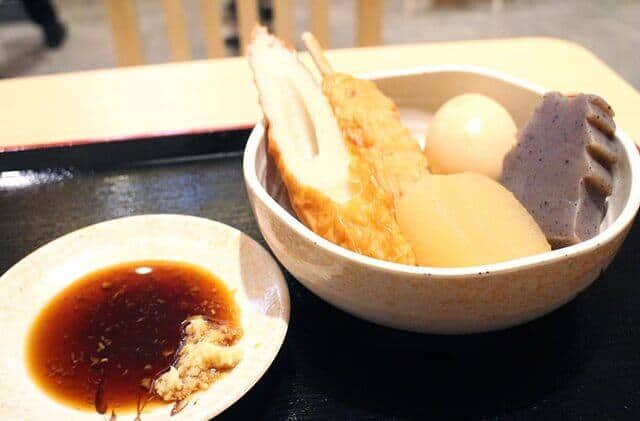
If you want to taste the Himeji Oden in a calm space with counter seats where you can easily look out for your food, Noko restaurant is one of those great restaurants that served Himeji Oden with a thin soup stock of kelp and ginger soy sauce on a separate plate. The proud broth that shines in a golden color has a gentle taste that has not changed since its establishment. The Kansai-style dashi stock made from bonito and kelp is so light that you can drink it after eating all the ingredients. This is a store specializing in oden that is very popular locally. The origin of the naming is that people used to play on Noko Island a long time ago.
Nadagiku Kappa Tei
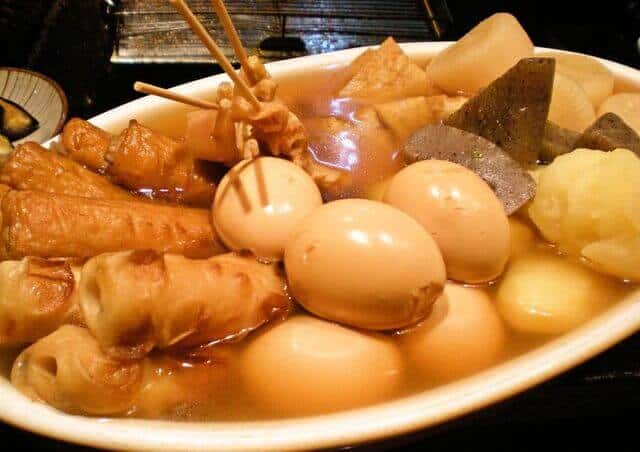
Saketatei Nadagiku is a restaurant run directly by Nadagiku Sake Brewery, where you can enjoy individual dishes and sake, especially Himeji Oden. Local Kansai media often feature this popular shop. The menu includes black oden and white oden. Staff sprinkle the black oden with ginger soy sauce made from Kushima soy sauce. When you eat a bite, the flavor of ginger soy sauce spreads in your mouth. The white oden is based on sake lees. You can add Shichimi to your liking. It goes well with sake. The contents of the skewers change depending on the day, but the contents are the same in black and white.
Stopper
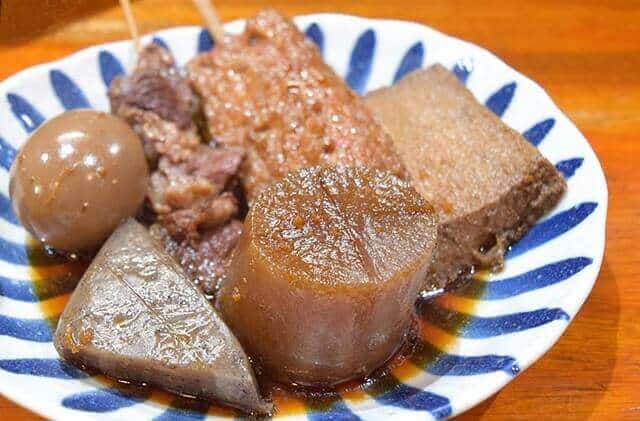
The “stopper” is well-known not only to the locals but also to tourists, and there are many famous people like entertainers and athletes who come and go easily. It is a famous store that requires reservations. Although the signboard lists the local charcoal grill, people praise it not only for its grilled birds but also for its oden, and locals say it originated Himeji Oden. It’s been 57 years since the shop was open at the current location, the world heritage site, Himeji Castle, a national treasure. It is a long-established store that has been making Oden for more than 60 years, for generations.
The Oden stewed in sweet, thick soup stock for about 3 days has a very savory taste. This is the type that is served after sprinkling with ginger soy sauce. The taste of thick soup stock and the harmony of ginger and soy sauce will give you a habit.
Himeji local sake and Himeji Oden Honpo
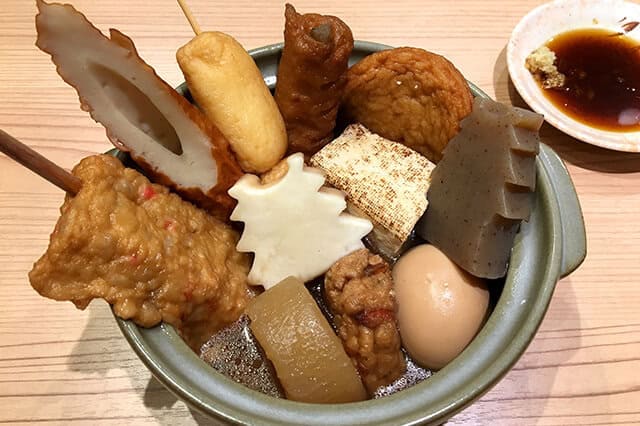
There is a food court about 120 seats and the space is spacious. Even if you have a lot of luggage or a stroller, you can easily stop by. “Himeji Oden Honpo 5 dishes” 500 yen is a menu where you can choose 5 kinds of favorite seeds. Popular items are “Kanbe lotus root sticks” and “Castle konjac” which is a model of Himeji Castle, where the local ingredients, Himeji lotus roots are crunchy. The sea bream part of the konnyaku wasn’t there originally; we improved it to the current shape. The ginger for the ginger soy sauce comes from Shirai Farm in Ichikawa Town.The taste is solid, and it leaves a savory taste in your mouth without losing to the Japanese style of oden.
FAQ
Himeji Oden (姫路おでん) FAQ
- What is Himeji Oden?
Himeji Oden is a local style of Japanese hot pot from Himeji, Hyogo Prefecture. It’s similar to regular oden, but the key feature is eating it with ginger soy sauce.
- How is it different from regular oden?
Regular oden is usually eaten with mustard (karashi). In Himeji, locals add a special ginger soy sauce, which gives a warm, spicy kick.
- What ingredients are in Himeji Oden?
Common items include daikon radish, eggs, konnyaku, tofu, and fish cakes simmered in a light broth, just like standard oden.
- When do people eat Himeji Oden?
It’s popular in autumn and winter as a warming dish, but many izakaya and restaurants in Himeji serve it year-round.
- Where can I try Himeji Oden?
You can enjoy it at local izakaya, traditional restaurants, and food stalls near Himeji Castle and the surrounding shopping streets.
- What does it taste like?
The broth is mild and savory, while the ginger soy sauce adds a sharp, refreshing flavor that makes it unique.
- Is it spicy?
Not very—the ginger soy sauce has a mild heat and fragrance, but it’s more warming than hot.
- Is it vegetarian-friendly?
Some ingredients like tofu and konnyaku are vegetarian, but the broth is usually made with fish stock. You may need to ask restaurants for options.
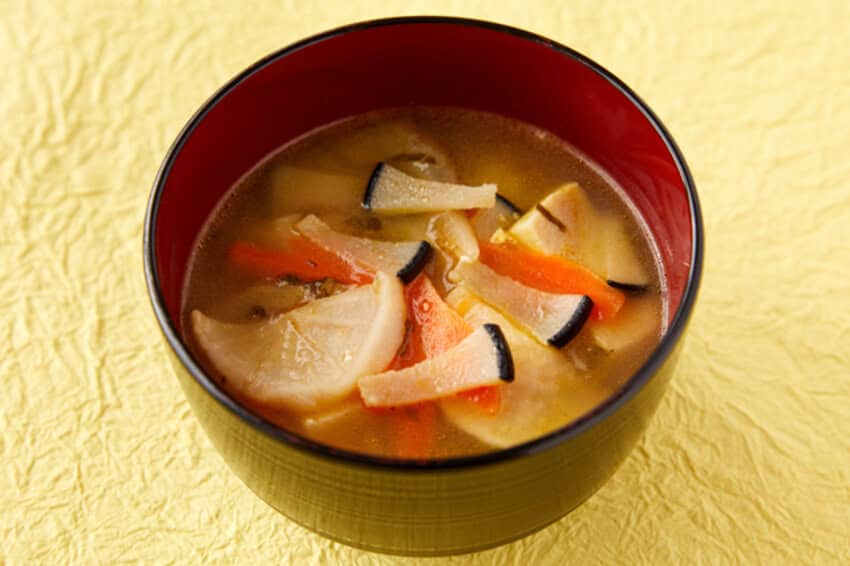
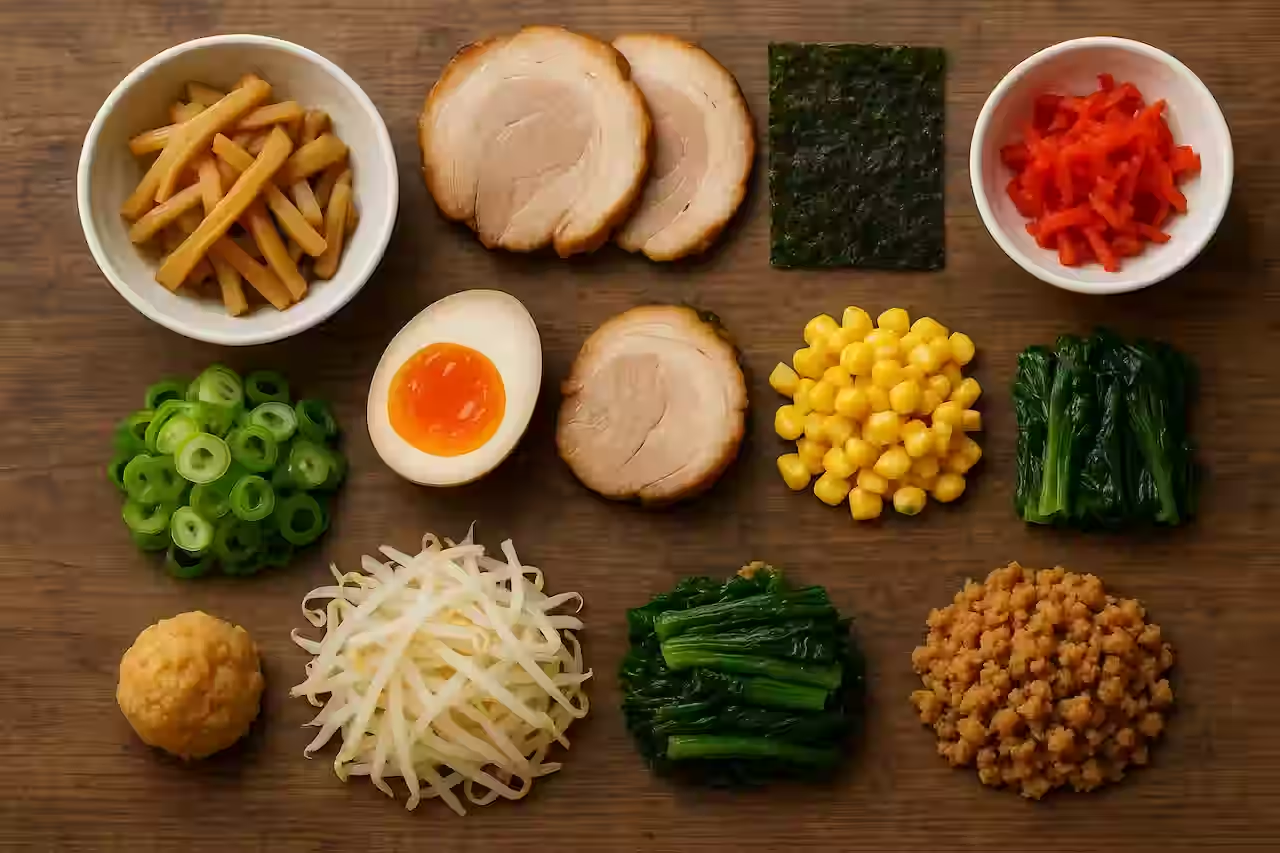
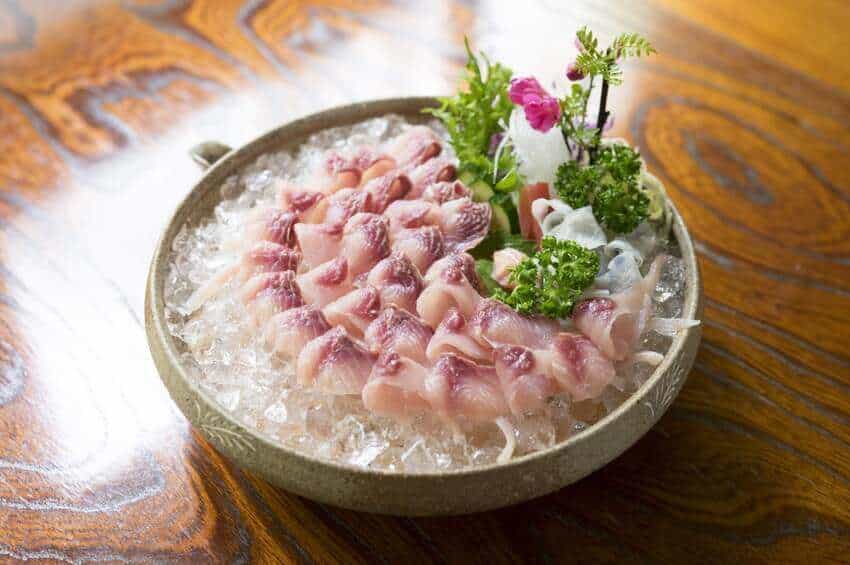
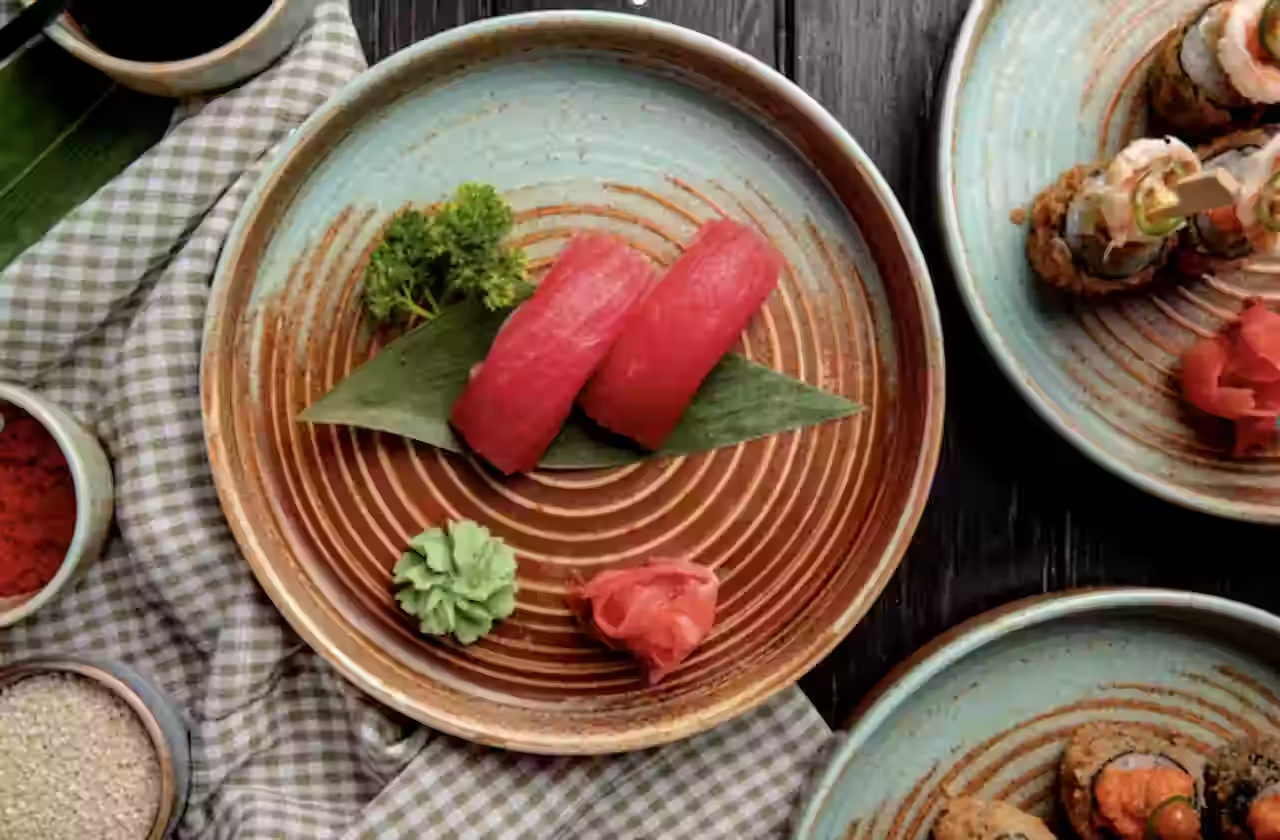
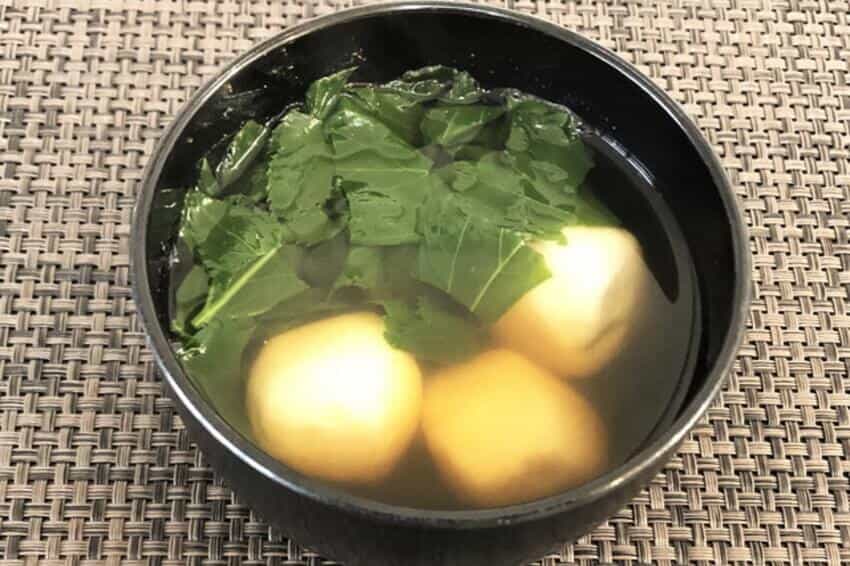

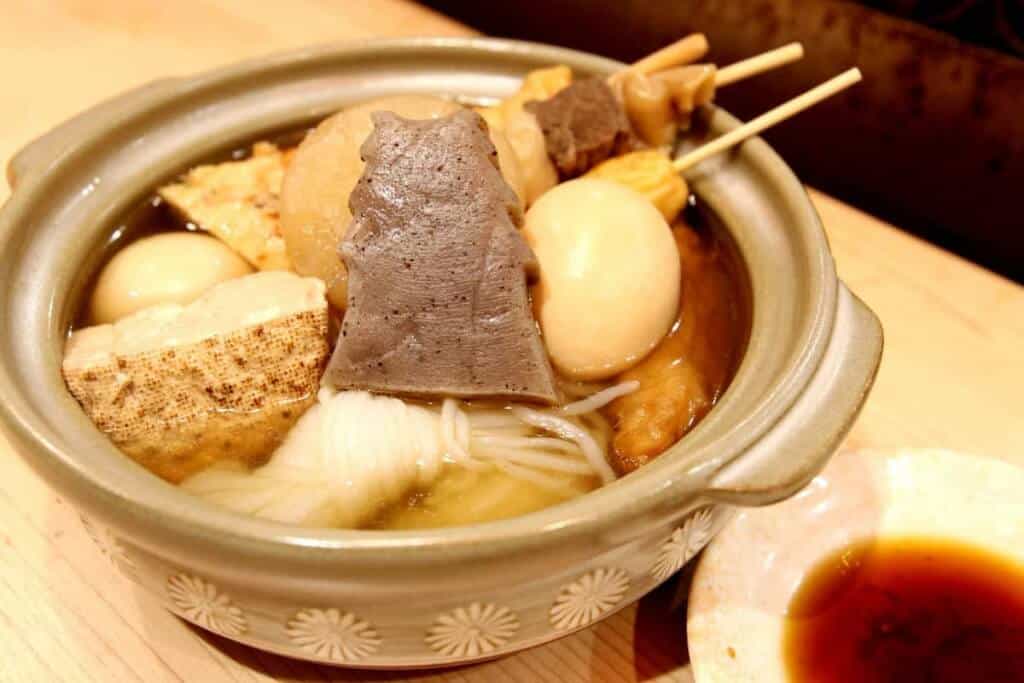
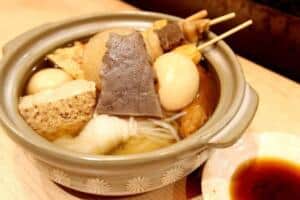
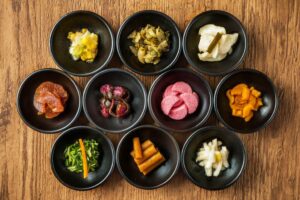
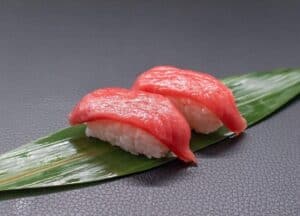
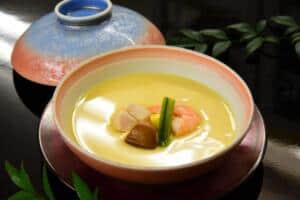

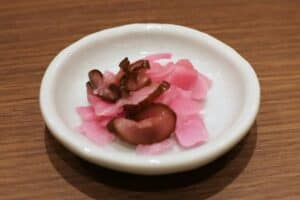

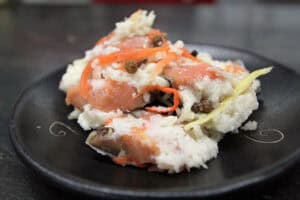
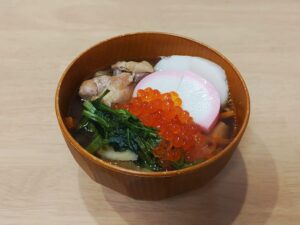
Comments